From day one, smartphones had the potential to be excellent handheld gaming devices, were it not for the limitations of touchscreens. Joysticks and buttons are still the best way to play, and while wireless controllers now easily connect to mobile devices, clamp-on gamepads are a better solution, and one of the best smartphone gamepads available is getting some useful upgrades today as Razer debuts the new Kishi V2.
For gamers who already have a next-gen console at home, simply connecting an Xbox or PlayStation controller to their smartphone is the easiest and cheapest way to create a mobile gaming system — but it’s far from ideal. You either need to awkwardly prop your phone up somewhere while playing or mount it atop the controller — creating a weird hybrid handheld with an odd centre of gravity. We’ve tried them all, but keep coming back to clamp-on smartphone gamepads which recreate the design of devices like the Nintendo Switch and Steam Deck, putting controls on either side of a wide screen.
Released back in 2020, Razer’s first-gen Kishi remains one of our preferred smartphone gamepads, but it’s far from perfect. With the new Kishi V2, Razer has addressed many of the complaints users had with the original, and added a few other improvements too: some great, some less so. There are still a few things we’d change, but if you find yourself often reaching for your smartphone to play AAA games through streaming services like Microsoft’s Xbox Game Pass, the new Kishi V2 makes one of the best smartphone gamepads even better.

Razer Kishi V2
WHAT IS IT?
An upgrade of Razer's original Kishi smartphone controller that adds extra buttons and a new extendable bridge support.
PRICE
$169.95
LIKE
The new extendable bridge makes the controller much easier to adjust for a variety of phone sizes, and swappable rubber spacers help accommodate smartphones in a case.
DISLIKE
The microswitches used for the action buttons and directional pad might not appeal to retro gamers, and with a smartphone removed, the Kishi V2 doesn't collapse as compact as the original did for easy transport.
Bye-Bye Straps, Hello Bridge
There are a few cosmetic changes that differentiate the Kishi V2 from the original version, including an overall cleaner design with straighter edges whereas the Kishi V1 went heavy on the curves and contours. The Kishi V2 looks a little more generic as a result — like an option you’ll find a few pages in on an Amazon search — but the redesign also makes the gamepad compatible with a wider variety of Android smartphones, even those bordering on phablets. (The Razer Kishi V2 is initially being released exclusively for Android devices, with an iOS version to come at a later date.)
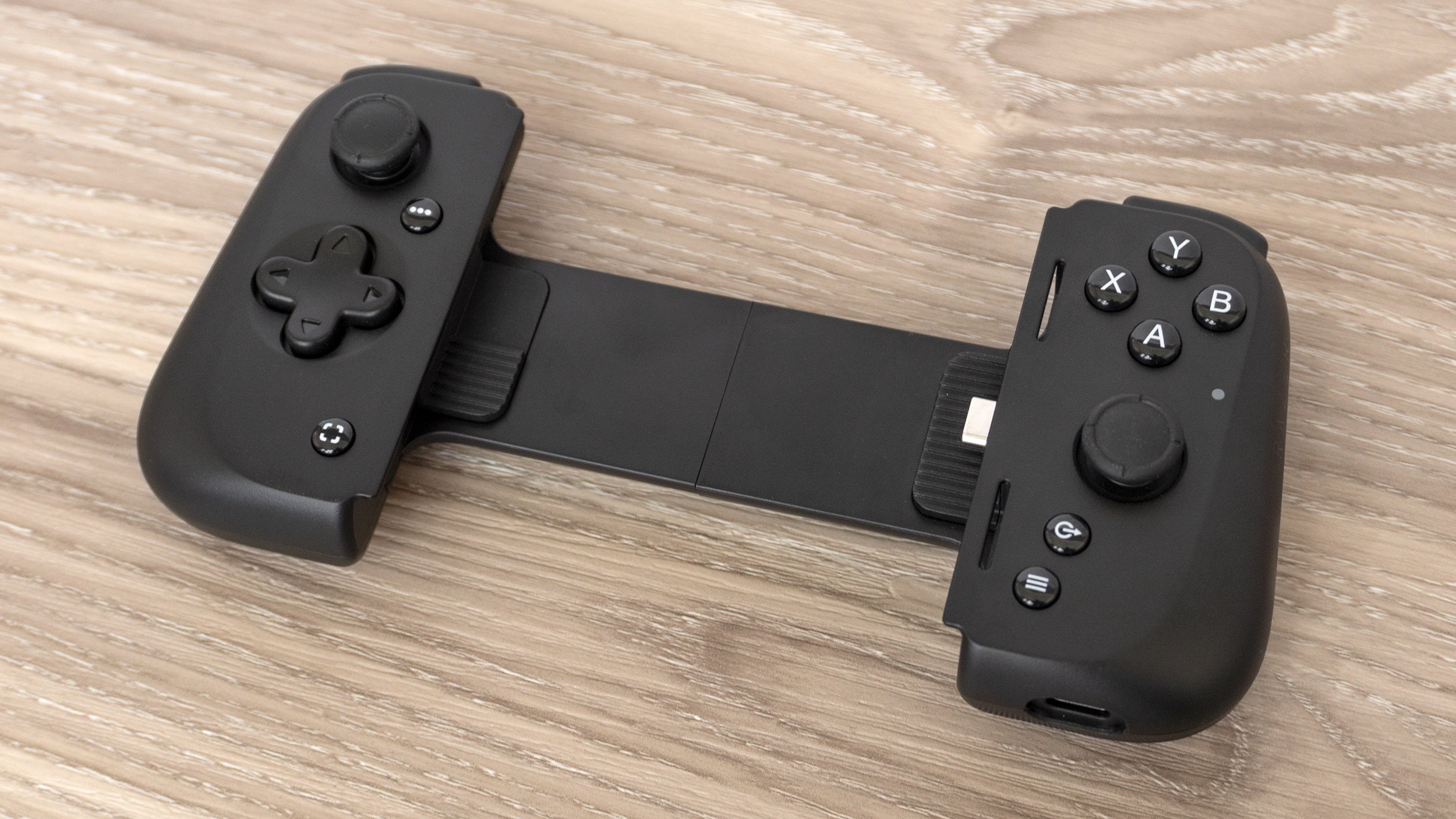
But the biggest change is how the Kishi V2’s two controller halves connect to each other, and a smartphone. The original version used a back plate with stretchy folding straps on either side, which many users found a bit finicky. For the Kishi V2, a rigid extendable bridge replaces the straps, with a spring-loaded mechanism inside that’s constantly pulling the two controller halves back together. It’s an approach that’s worked well for competitor’s products like the Backbone One (which is now available for Android phones too) and, as they say, imitation is the sincerest form of flattery.
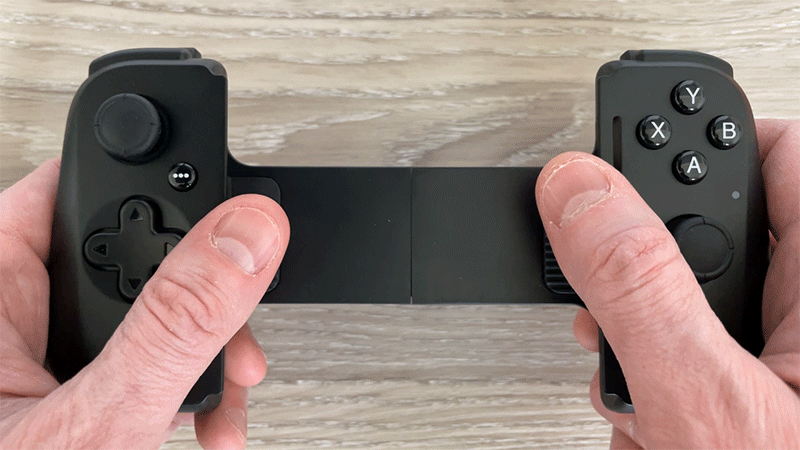
The extendable bridge makes it incredibly easy to securely mount the Kishi V2 to a smartphone and remove it afterward, as it keeps the two controller halves perfectly parallel the entire time. The downside to this redesign is that the bridge only collapses so far, and isn’t removable. So while the two halves of the Kishi V1 could be attached to each other when not in use making the controller much smaller and easier to stash in a bag, the Kishi V2 can’t do that, leaving the two controller halves permanently longing for each other a short distance away, but never to meet.
Keep That Case On (Maybe)
Another upgrade for those of you wise enough to keep your smartphone in a protective case is a pair of swappable rubber inserts that allow the Kishi V2 to accommodate thicker devices — or phones protected in a case.
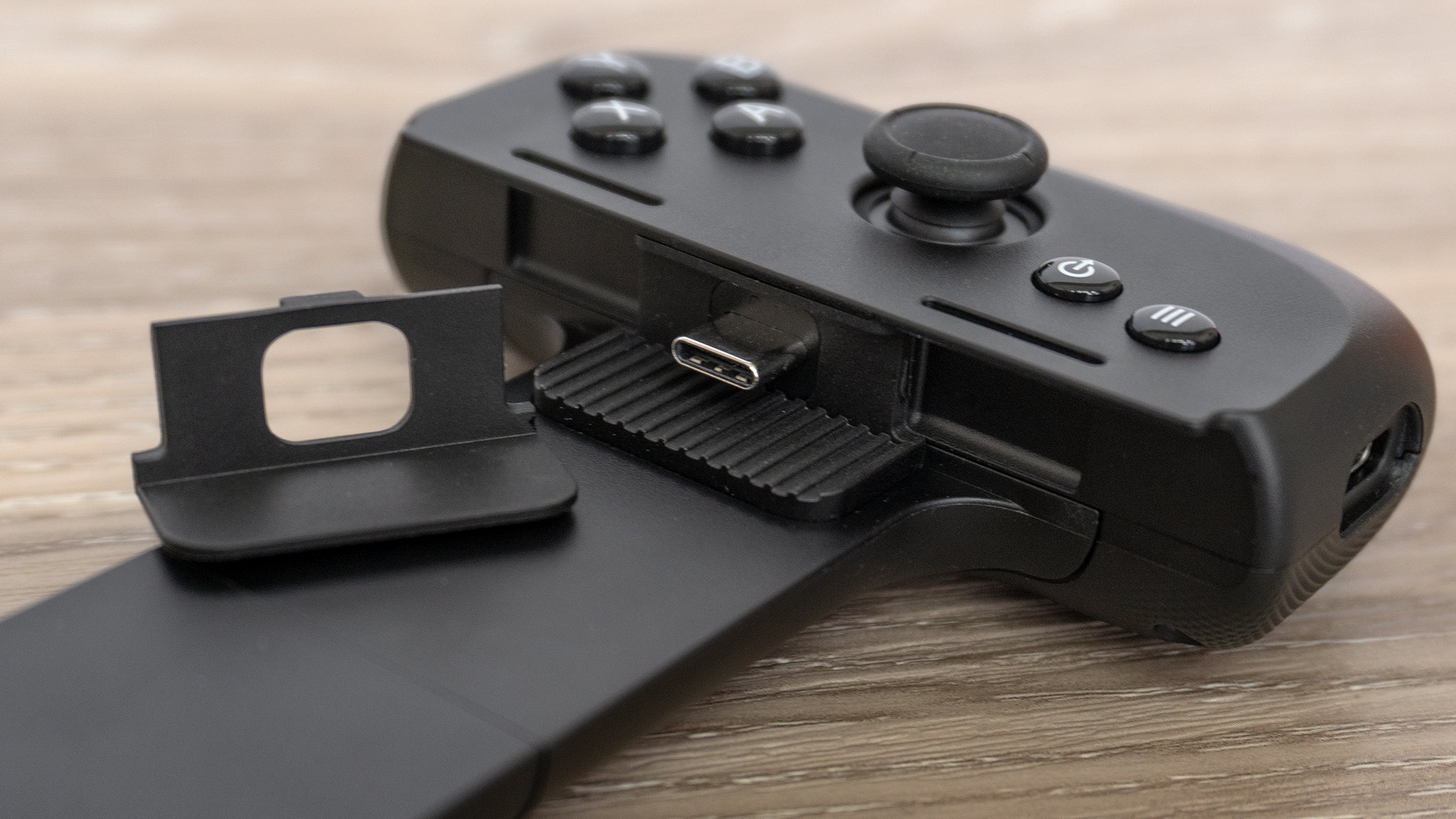
The thicker of the two rubber insert sets comes pre-installed on the Kishi V2 which are better at securing a thin, naked smartphone, but the alternate thinner inserts add more clearance for phones made slightly thicker with a case. Razer doesn’t guarantee that every phone+case combo is compatible with the Kishi V2 — there are some truly gigantic case options out there — but if you’re using a relatively thin silicone cover to add some extra drop protection to your device, swapping in the thinner inserts should ensure you don’t have to remove it every time you want to game.
Push My Buttons
Like the latest-gen controllers available from Sony, Microsoft, and Nintendo, the Razer Kishi includes a pair of asymmetrical analogue sticks that are clickable, a d-pad, four action buttons, two pairs of shoulder buttons, and buttons for accessing menus and other non-gaming functionality.
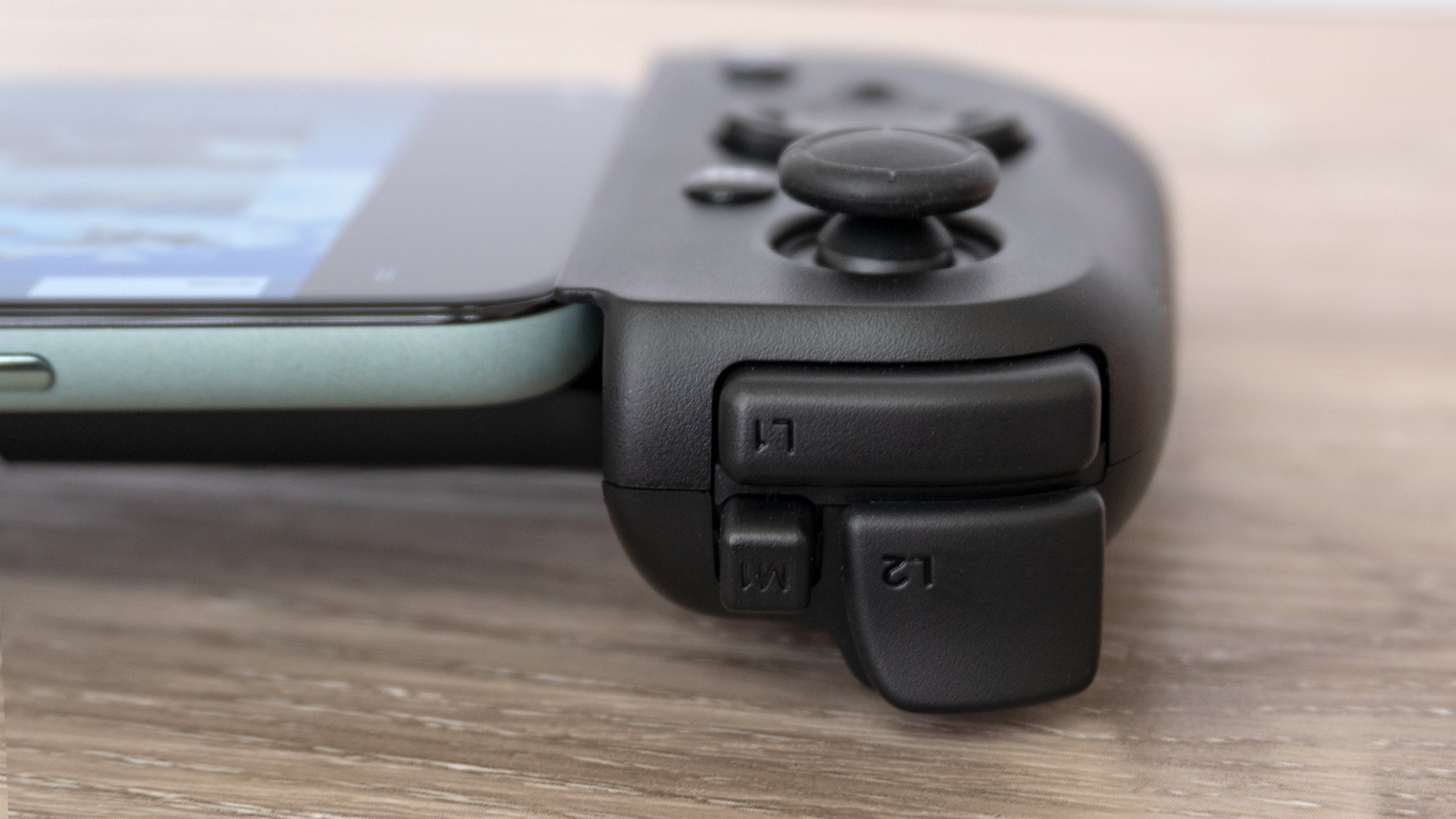
The new Kishi V2 adds an additional ‘Share’ button to the face, as well as a third pair of smaller shoulder buttons, located next to L2 and R2, that can be configured through a new Razer Nexus app to replicate the functionality of any other button. Gamers could move the functionality of some of the action buttons up here, or left and right on the d-pad, to create a custom configuration that gives them an advantage.

I tested the Razer Kishi V2 with a Google Pixel 5 and Microsoft’s Xbox Game Pass streaming service, and genuinely think it’s the best way to play AAA games on a smartphone. It physically connects to a device’s USB-C port and draws all the power it needs from there so the gamepad never needs to be charged. The use of the USB-C port also means there’s no lag like can be introduced with Bluetooth controllers connected wirelessly, and you don’t need to install any extra software to make it work. (The Razer Nexus app is optional.) If an Android game, PC port, or streaming service already supports controllers, the Razer Kishi V2 will work too.
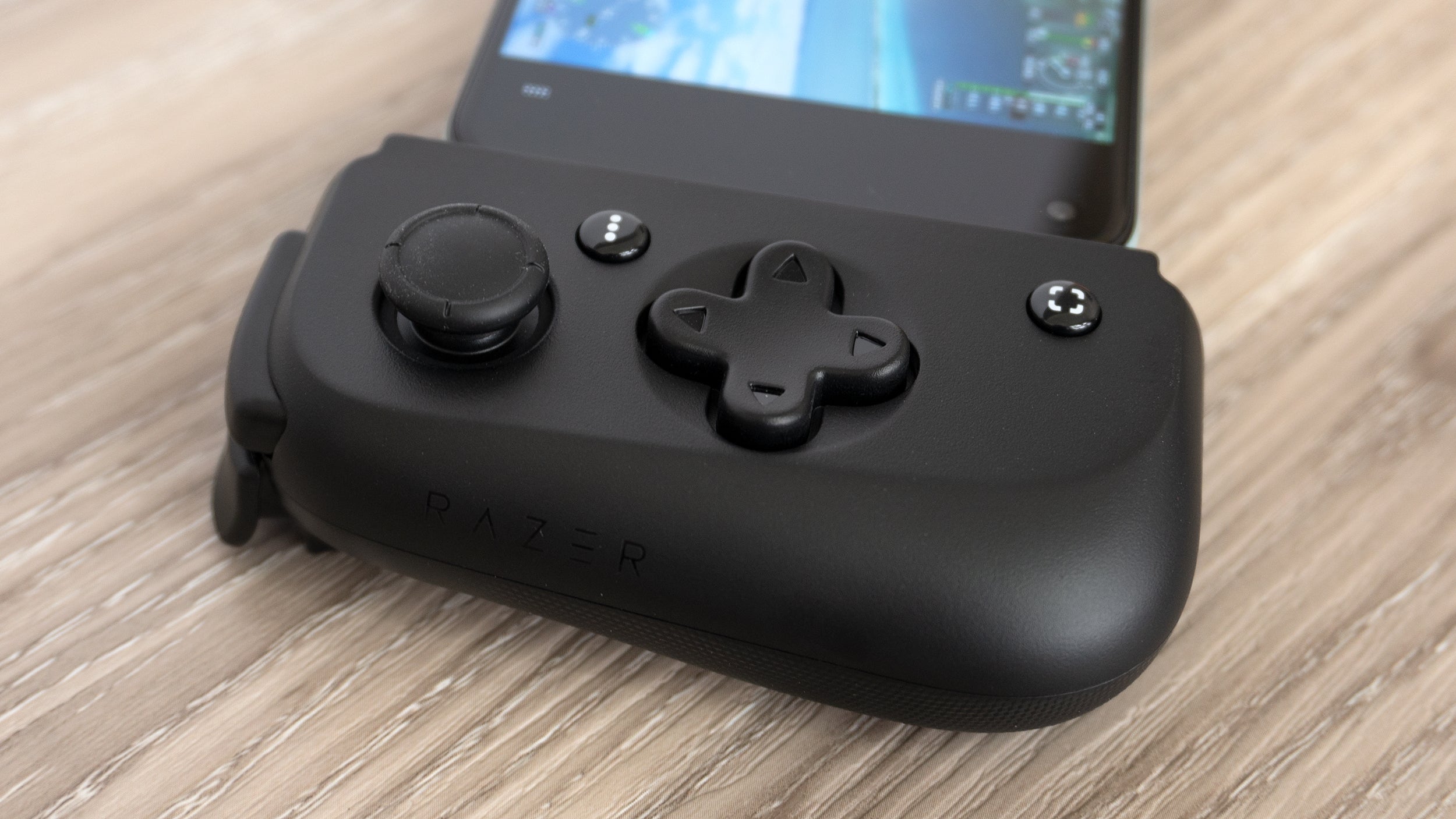
One of my few complaints with the Kishi V2 is that Razer has switched from using squishy membranes beneath the action buttons, shoulder bumpers, and d-pad, to mechanical switches that produce a high-pitch “click” every time they’re pressed. The switch doesn’t affect gameplay, but a lot of retro gamers prefer membrane buttons over switches to emulate the feeling of old-school console gamepads, so the change is unfortunate given the Kishi V2 paired with a smartphone running an emulator is a great way to relive classic retro games.
Still No Wired Headphone Support
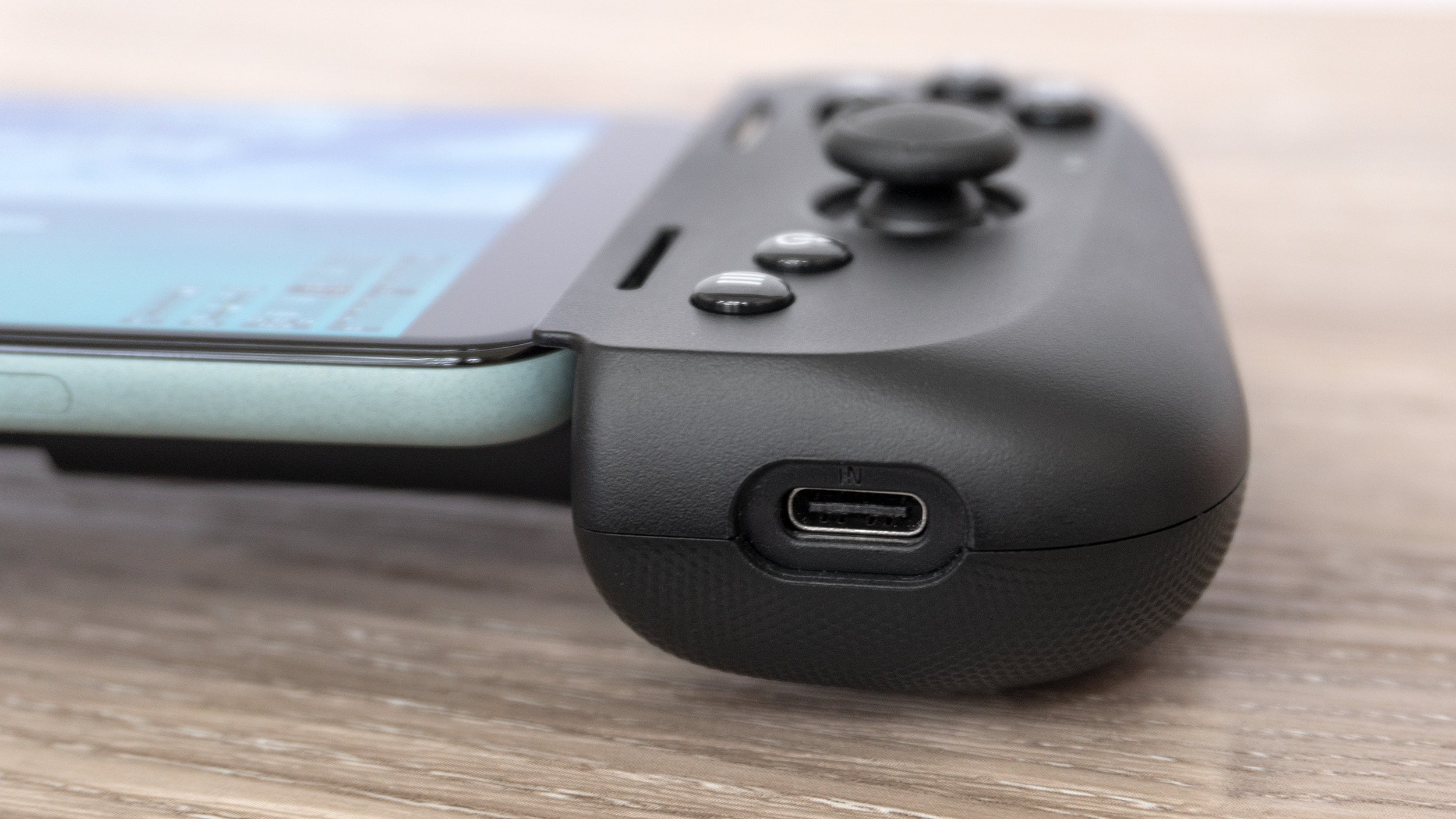
Gaming is one of the more processor-intensive activities you can do on a smartphone, so Razer has carried over the USB-C charging passthrough port from the V1 to the Kishi V2, allowing a smartphone to be charged while docked in the gamepad. Unfortunately, as was the case with the Kishi V1, the USB-C passthrough only carries power, and it doesn’t allow wired headphones to be connected. You either need to rely on your smartphone’s speaker, or wireless Bluetooth headphones, which are very much less than ideal for gaming given the lag they introduce.
Despite the trade-offs with the Kishi’s redesign, overall Razer has delivered a big improvement on the original version, and as the types of games playable on our pocket computers continue to improve by leaps and bounds thanks to the evolution of mobile processors and the capabilities of game streaming services, tapping a touchscreen just doesn’t cut it anymore. It’s time to splurge on a proper controller, and even with a price bump to $169.95 for the Kishi V2, it’s still worth the upgrade, but there’s now some stiff competition out there, including alternatives like the similarly-priced Backbone One that have already solved the headphone issue.
